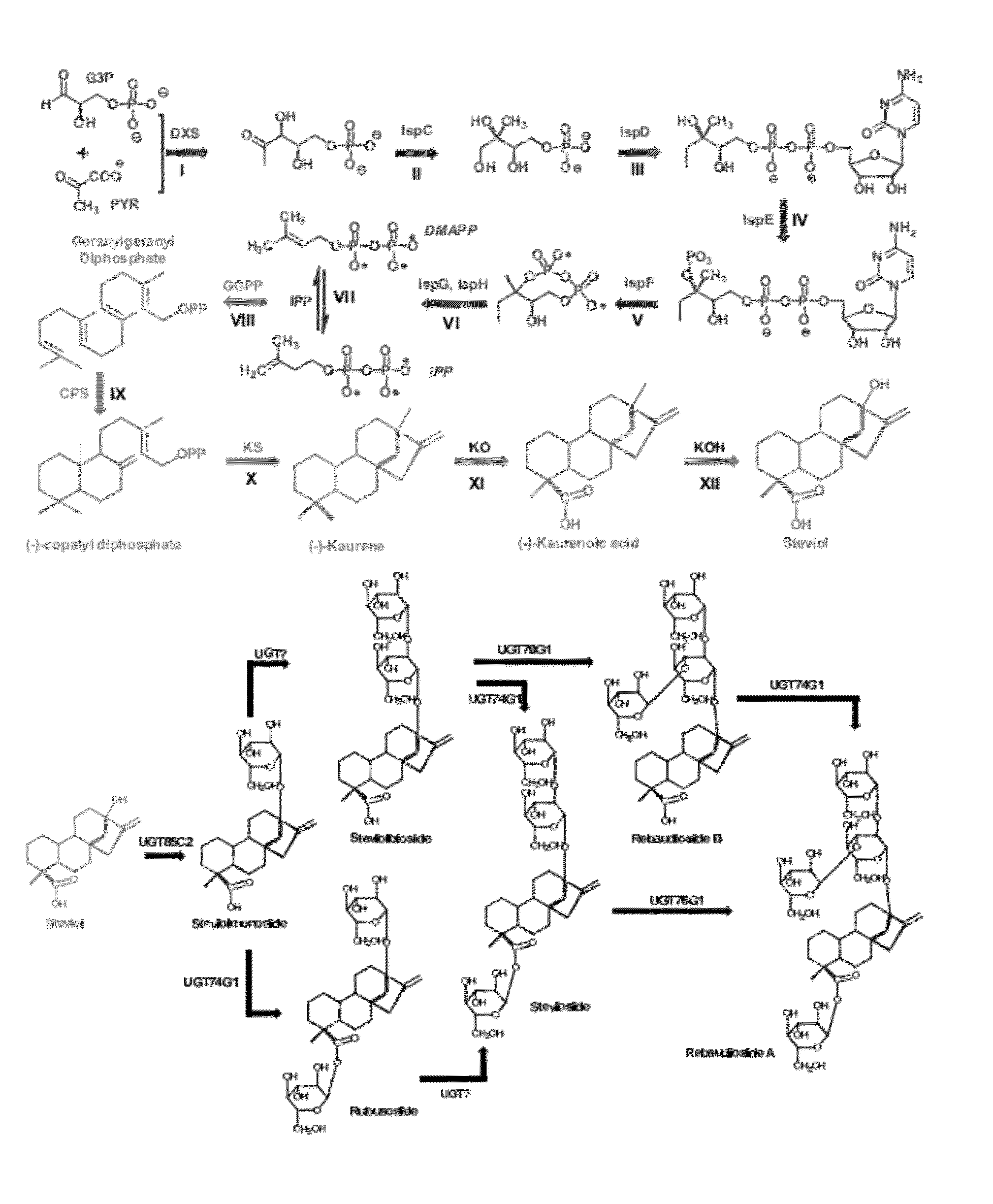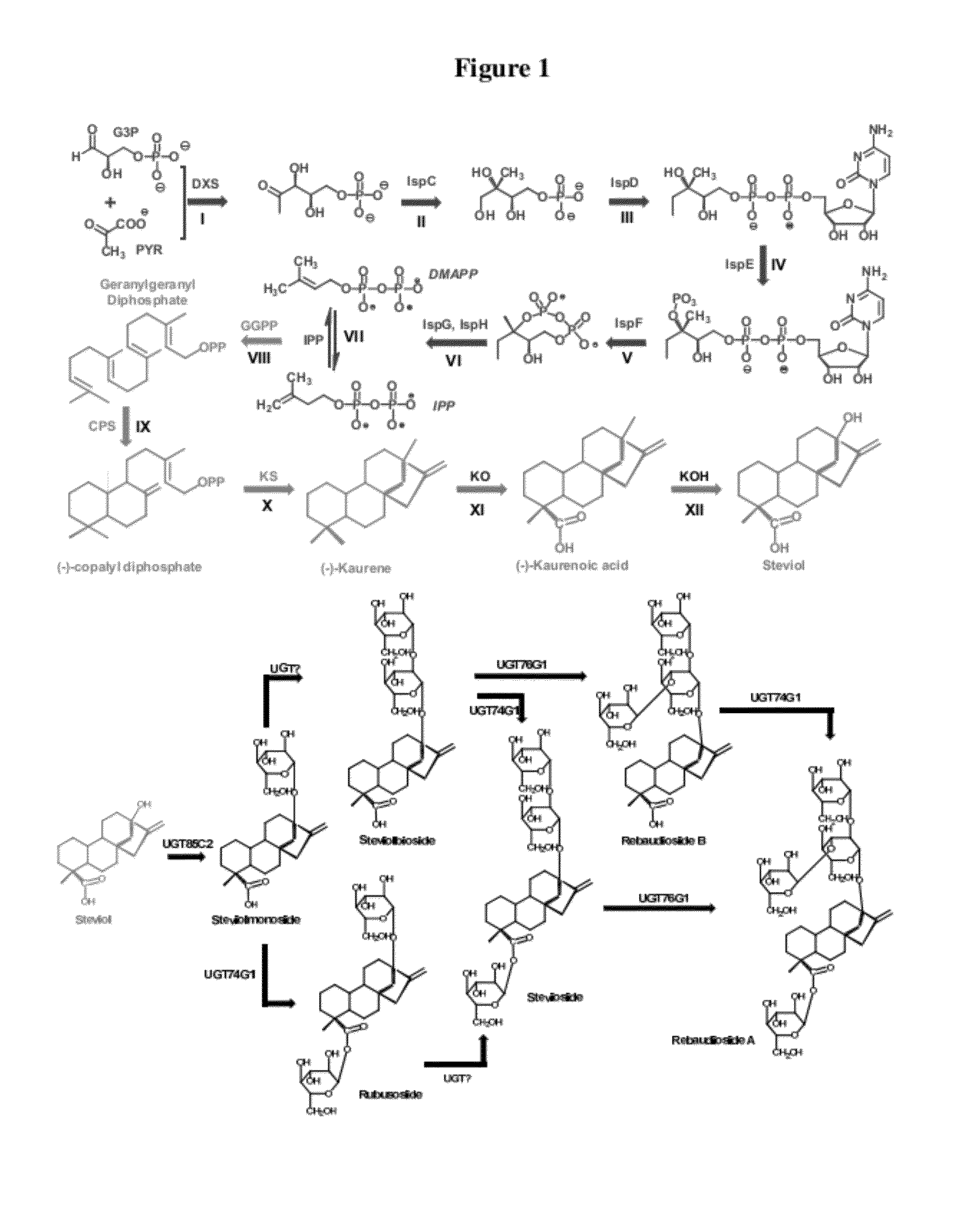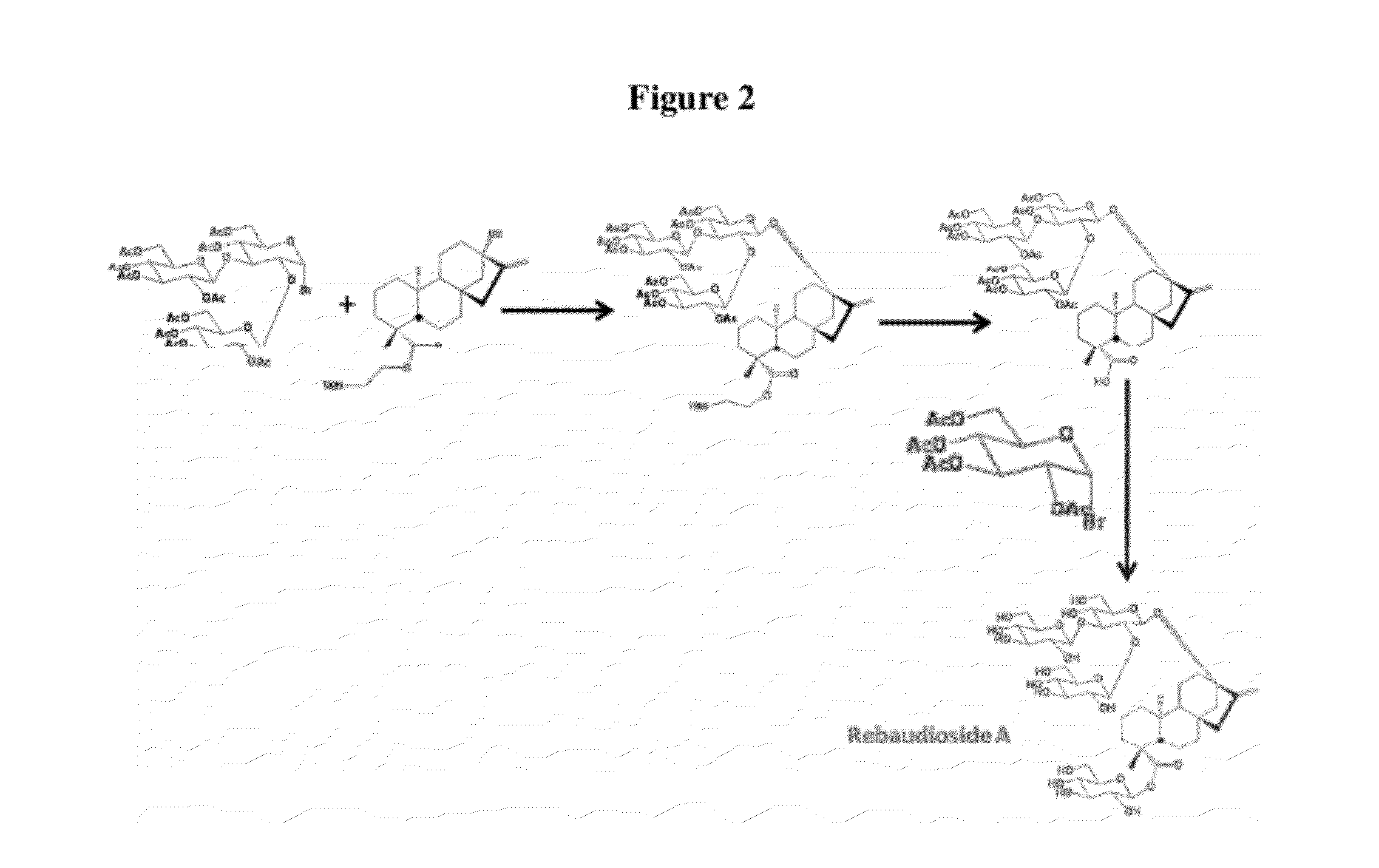Microbial production of natural sweeteners, diterpenoid steviol glycosides
a technology of diterpenoid steviol glycoside and natural sweetener, which is applied in the field of terpenoids, can solve the problems of severe limitations in yield and extraction procedures
- Summary
- Abstract
- Description
- Claims
- Application Information
AI Technical Summary
Benefits of technology
Problems solved by technology
Method used
Image
Examples
example 1
Engineering Karuene Biosynthesis in E. coli
[0111]The upstream MEP pathway module, dxs-idi-ispdF, was cloned under the control of two synthetic promoters with low (Trc) and high (T7) strength. The MEP pathway is further localized into the chromosome of the E. coli MG1655 recA-EndA-strain for the overproduction of the upstream isoprenoid metabolites and downstream kaurene. The putative downstream pathway for the biosynthesis of kaurene, GPPP synthase (G), Copalyl pyrophosphate synthase (C), and Karuene Synthase (K), was cloned under two promoters (Trc and T7) using a 20 copy (p20Trc-KCG) and 5 copy plasmid (p5T7-KCG). The downstream pathways was transferred into the upstream chromosomal MEP pathway engineered strains. A total of 4 strains were constructed with varying upstream and downstream pathway to understand the variation in kaurene production corresponding to the pathway strengths. FIG. 3B summarizes the details of strain construction and results of kaurene accumulation from en...
example 2
Metabolite Indole Accumulation Inversely Correlates with Karuene
[0112]Metabolomic analysis of the engineered strains identified the accumulation of the metabolite indole that correlated strongly with pathway expression levels and kaurene production (FIG. 4). The corresponding peaks in the gas chromatography-mass spectrometry (GC-MS) chromatogram was identified as indole and kaurene.
TABLE 2Details of plasmids constructed for the studyOrigin ofAntibioticNoPlasmidreplicationmarker1p20T7MEPpBR322Amp2p20TrcMEPpBR322Amp4p20T7MEPKmFRPpBR322Km6p20TrcMEPKm-FRPpBR322Km9p20TrcKCGpBR322Amp13p5T7KCGSC101Spect
TABLE 3Details of the primers used for the cloning ofplasmids, and chromosomal delivery of the MEP pathway.Primer NameSequencesdxsNdeI(s)CGGCATATGAGTTTTGATATTGCCAAATACCCG(SEQ ID NO: 17)dxsNheI(a)CGGCTAGCTTATGCCAGCCAGGCCTTGATTTTG(SEQ ID NO: 18)idiNheI(s)CGCGGCTAGCGAAGGAGATATACATATGCAAACGGAACACGTCATTTTATTG(SEQ ID NO: 19)idiEcoRI(a)CGGAATTCGCTCACAACCCCGGCAAATGTCGG(SEQ ID NO: 20)ispDFEcoRI(s)GCG...
PUM
| Property | Measurement | Unit |
|---|---|---|
| thickness | aaaaa | aaaaa |
| flow rate | aaaaa | aaaaa |
| temperatures | aaaaa | aaaaa |
Abstract
Description
Claims
Application Information
 Login to View More
Login to View More - R&D
- Intellectual Property
- Life Sciences
- Materials
- Tech Scout
- Unparalleled Data Quality
- Higher Quality Content
- 60% Fewer Hallucinations
Browse by: Latest US Patents, China's latest patents, Technical Efficacy Thesaurus, Application Domain, Technology Topic, Popular Technical Reports.
© 2025 PatSnap. All rights reserved.Legal|Privacy policy|Modern Slavery Act Transparency Statement|Sitemap|About US| Contact US: help@patsnap.com



